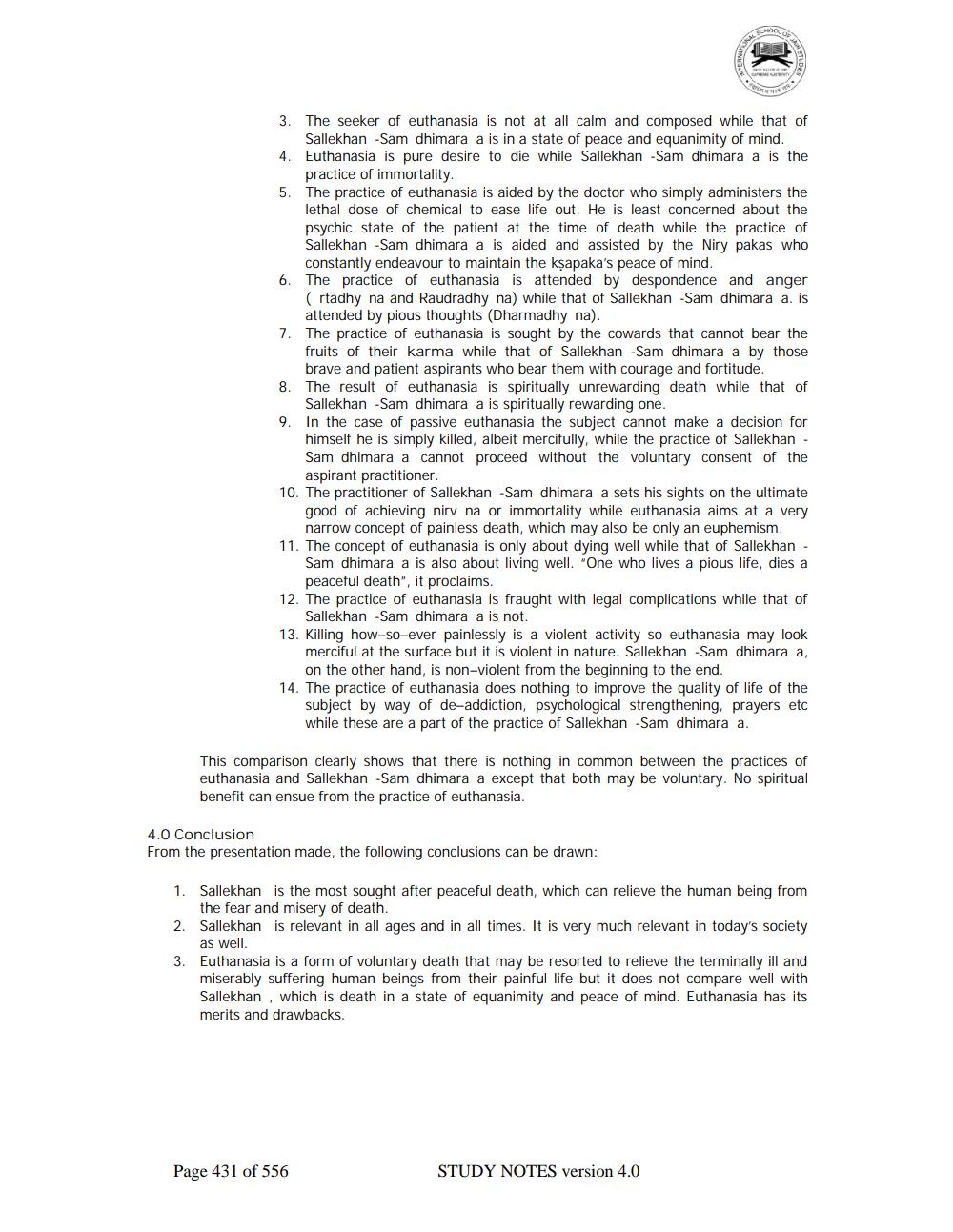________________
3. The seeker of euthanasia is not at all calm and composed while that of Sallekhan -Sam dhimara a is in a state of peace and equanimity of mind.
4. Euthanasia is pure desire to die while Sallekhan -Sam dhimara a is the practice of immortality.
5. The practice of euthanasia is aided by the doctor who simply administers the lethal dose of chemical to ease life out. He is least concerned about the psychic state of the patient at the time of death while the practice of Sallekhan -Sam dhimara a is aided and assisted by the Niry pakas who constantly endeavour to maintain the kṣapaka's peace of mind.
6. The practice of euthanasia is attended by despondence and anger (rtadhy na and Raudradhy na) while that of Sallekhan -Sam dhimara a. is attended by pious thoughts (Dharmadhy na).
7. The practice of euthanasia is sought by the cowards that cannot bear the fruits of their karma while that of Sallekhan -Sam dhimara a by those brave and patient aspirants who bear them with courage and fortitude.
8. The result of euthanasia is spiritually unrewarding death while that of Sallekhan -Sam dhimara a is spiritually rewarding one.
9. In the case of passive euthanasia the subject cannot make a decision for himself he is simply killed, albeit mercifully, while the practice of Sallekhan - Sam dhimara a cannot proceed without the voluntary consent of the aspirant practitioner.
10. The practitioner of Sallekhan -Sam dhimara a sets his sights on the ultimate good of achieving nirv na or immortality while euthanasia aims at a very narrow concept of painless death, which may also be only an euphemism.
11. The concept of euthanasia is only about dying well while that of Sallekhan - Sam dhimara a is also about living well. "One who lives a pious life, dies a peaceful death", it proclaims.
12. The practice of euthanasia is fraught with legal complications while that of Sallekhan -Sam dhimara a is not.
13. Killing how-so-ever painlessly is a violent activity so euthanasia may look merciful at the surface but it is violent in nature. Sallekhan -Sam dhimara a, on the other hand, is non-violent from the beginning to the end.
14. The practice of euthanasia does nothing to improve the quality of life of the subject by way of de-addiction, psychological strengthening, prayers etc while these are a part of the practice of Sallekhan -Sam dhimara a.
This comparison clearly shows that there is nothing in common between the practices of euthanasia and Sallekhan -Sam dhimara a except that both may be voluntary. No spiritual benefit can ensue from the practice of euthanasia.
4.0 Conclusion
From the presentation made, the following conclusions can be drawn:
1. Sallekhan is the most sought after peaceful death, which can relieve the human being from the fear and misery of death.
2. Sallekhan is relevant in all ages and in all times. It is very much relevant in today's society as well.
3. Euthanasia is a form of voluntary death that may be resorted to relieve the terminally ill and miserably suffering human beings from their painful life but it does not compare well with Sallekhan, which is death in a state of equanimity and peace of mind. Euthanasia has its merits and drawbacks.
Page 431 of 556
STUDY NOTES version 4.0




